Web Scraping CareerBuilder Reviews Data - Unlock the Voice of Job Seekers and Employees
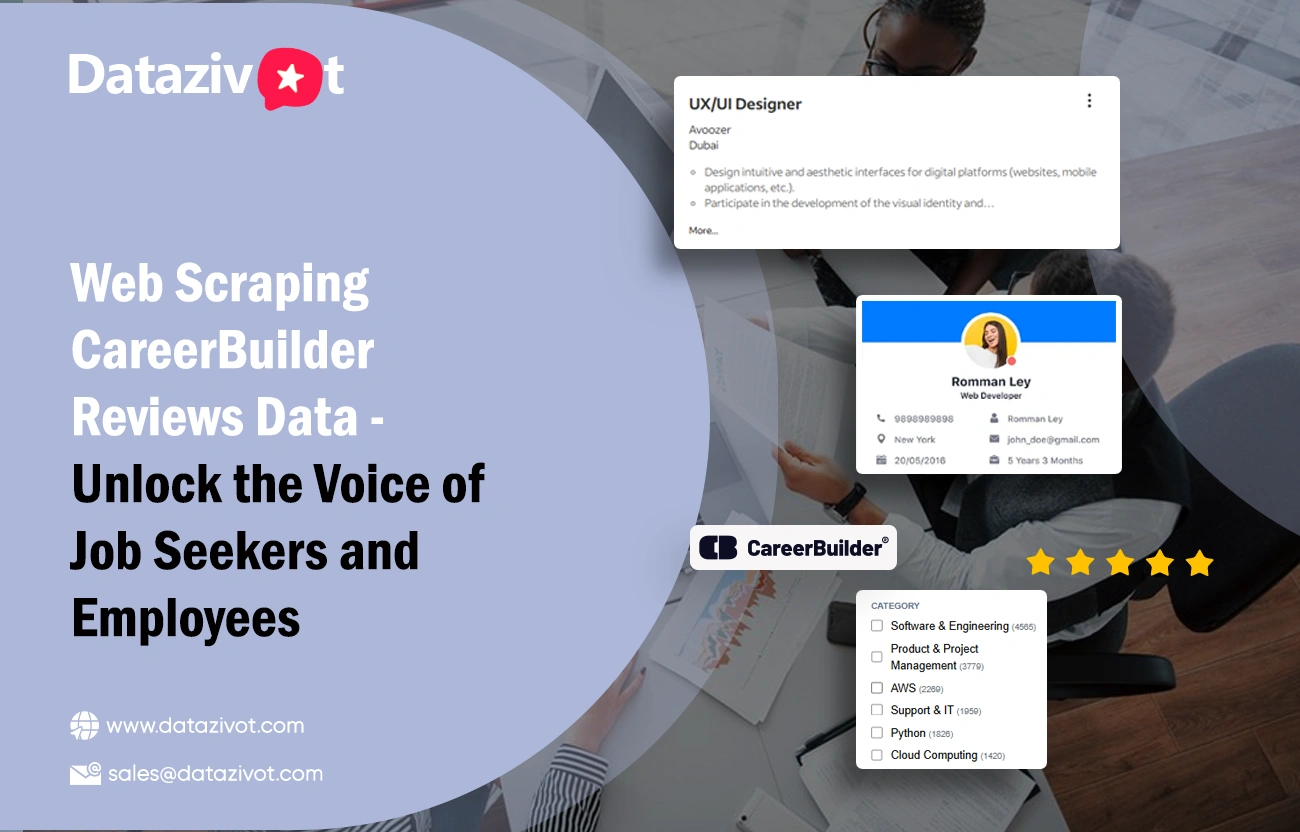
Introduction
In the digital age, job boards are more than just platforms to apply for work—they're ecosystems of user-generated content, especially in the form of company reviews. Among the most recognized job sites is CareerBuilder, a platform with thousands of reviews by job seekers and employees. For HR tech firms, market analysts, and competitive intelligence teams, these reviews represent a treasure trove of insights. But how can you harness this at scale?
The answer lies in Web Scraping CareerBuilder Reviews Data.
This guide is a deep-dive into the CareerBuilder Reviews Data Scraping process—covering the what, why, and how of extracting review data to make smarter business, hiring, and research decisions. We'll walk you through the tools and techniques to Scrape CareerBuilder Reviews Data, build your own CareerBuilder Reviews Data Extractor, and deploy a powerful CareerBuilder Reviews Scraper to stay ahead of market dynamics.
Why Scrape CareerBuilder Reviews Data?
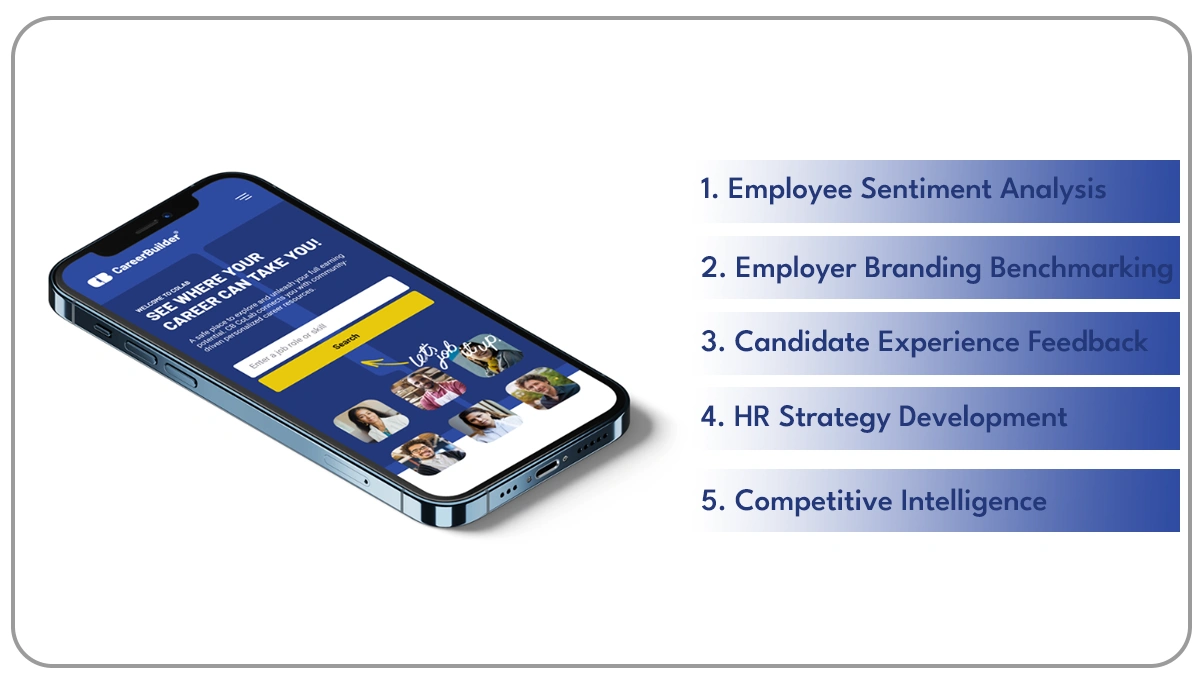 CareerBuilder features reviews on companies from employees and candidates. These reviews typically include feedback on work culture, compensation, management, growth opportunities, and interview experiences.
CareerBuilder features reviews on companies from employees and candidates. These reviews typically include feedback on work culture, compensation, management, growth opportunities, and interview experiences.Here’s why extracting this data is vital:
1. Employee Sentiment Analysis
Discover how employees feel about companies, departments, or locations. Sentiment trends help you understand real-time workforce satisfaction.
2. Employer Branding Benchmarking
Compare company reputations side-by-side. This is key for companies improving their online image.
3. Candidate Experience Feedback
Find what candidates say about interview processes, hiring practices, and recruiter behavior.
4. HR Strategy Development
HR departments can use insights to revamp workplace policies, adjust compensation, and improve employee engagement.
5. Competitive Intelligence
Analyze reviews of competitors to understand where they excel—or fall short—in employee satisfaction.
What Information Can You Extract?
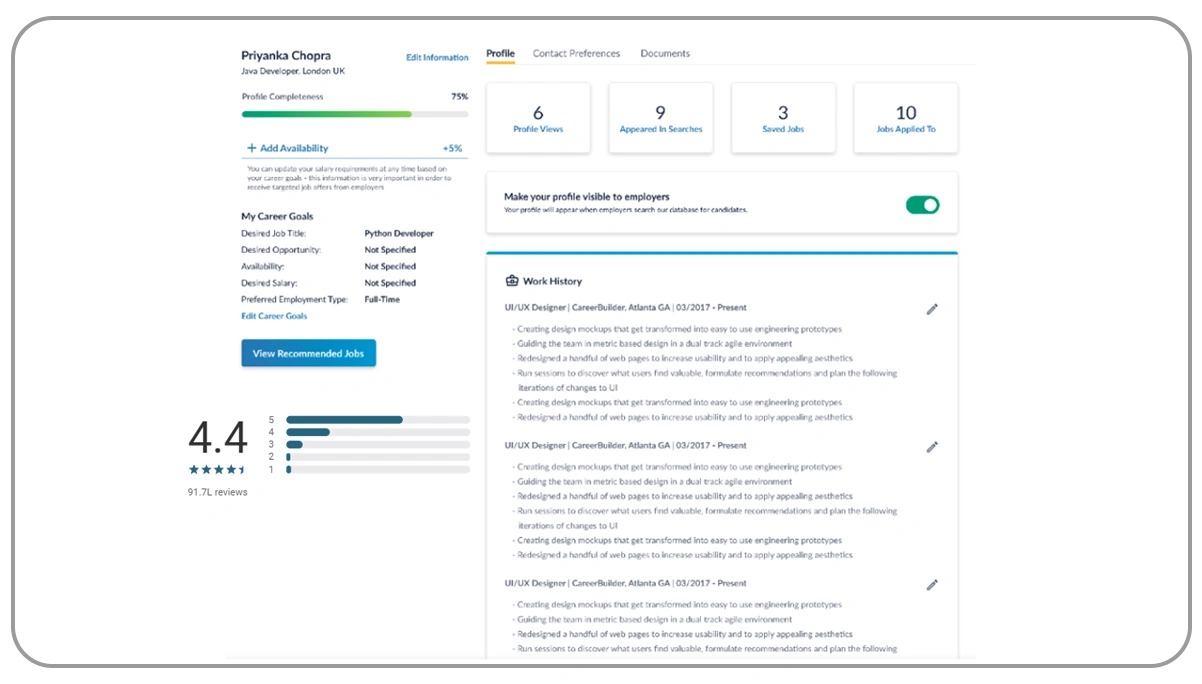 A comprehensive CareerBuilder Reviews Data Extractor can pull the following elements:
A comprehensive CareerBuilder Reviews Data Extractor can pull the following elements:- Star ratings (overall, culture, management, etc.)
- Review title and content
- Date of review
- Company name
- Location
- Reviewer's job title or department
- Length of employment
- Pros and Cons sections
- Advice to management (if available)
- Job seeker or employee tag
This structured data gives an all-around view of the employer landscape across industries and geographies.
Tools to Scrape CareerBuilder Reviews Data
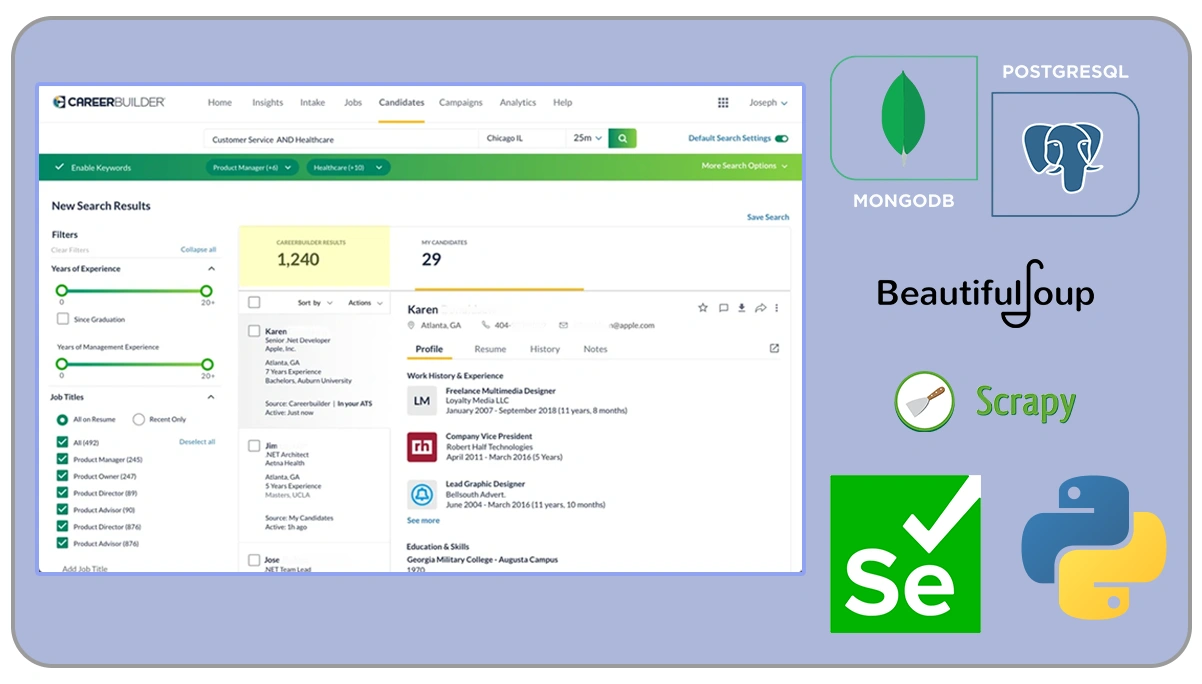 To create a scalable CareerBuilder Reviews Scraper, here’s a reliable tech stack:
To create a scalable CareerBuilder Reviews Scraper, here’s a reliable tech stack:Python Libraries:
Requests – for HTTP requests
BeautifulSoup – for HTML parsing
Selenium – for dynamic content and rendering JavaScript
Scrapy – for scalable crawling
Data Handling & Analysis:
pandas, NumPy – data wrangling
TextBlob, NLTK, spaCy – sentiment analysis
matplotlib, seaborn, Plotly – for visualization
Storage:
CSV, JSON – quick exports
PostgreSQL, MongoDB – structured storage
Elasticsearch – for full-text search indexing
Sample Python Script to Scrape CareerBuilder Reviews
Here’s a simplified script using BeautifulSoup:
import requests
from bs4 import BeautifulSoup
url = 'https://www.careerbuilder.com/company/...views';
headers = {'User-Agent': 'Mozilla/5.0'}
response = requests.get(url, headers=headers)
soup = BeautifulSoup(response.content, 'html.parser')
reviews = soup.find_all('div', class_='review-card')
for review in reviews:
rating = review.find('div', class_='stars').text
title = review.find('h3').text
body = review.find('p', class_='review-content').text
print(f'Title: {title}, Rating: {rating}, Review: {body}')
Disclaimer: Actual class names and review structures may differ. You may need to adapt this code for dynamic pages using Selenium.
Real-World Applications of Review Data Scraping
 Let’s explore some practical use cases of CareerBuilder Reviews Data Scraping:
Let’s explore some practical use cases of CareerBuilder Reviews Data Scraping:For Employers:
- Compare your brand reputation to competitors
- Monitor changes in employee satisfaction post-policy updates
- Identify office locations with poor feedback
For HR SaaS Companies:
- Enrich product dashboards with scraped review insights
- Train machine learning models on employee sentiment data
For Market Researchers:
- Study employee satisfaction trends across industries
- Track labor issues, such as mass layoffs or toxic work culture indicators
For Job Portals:
- Provide aggregated ratings to users
- Personalize job suggestions based on culture-fit reviews
Ethical & Legal Guidelines for Scraping
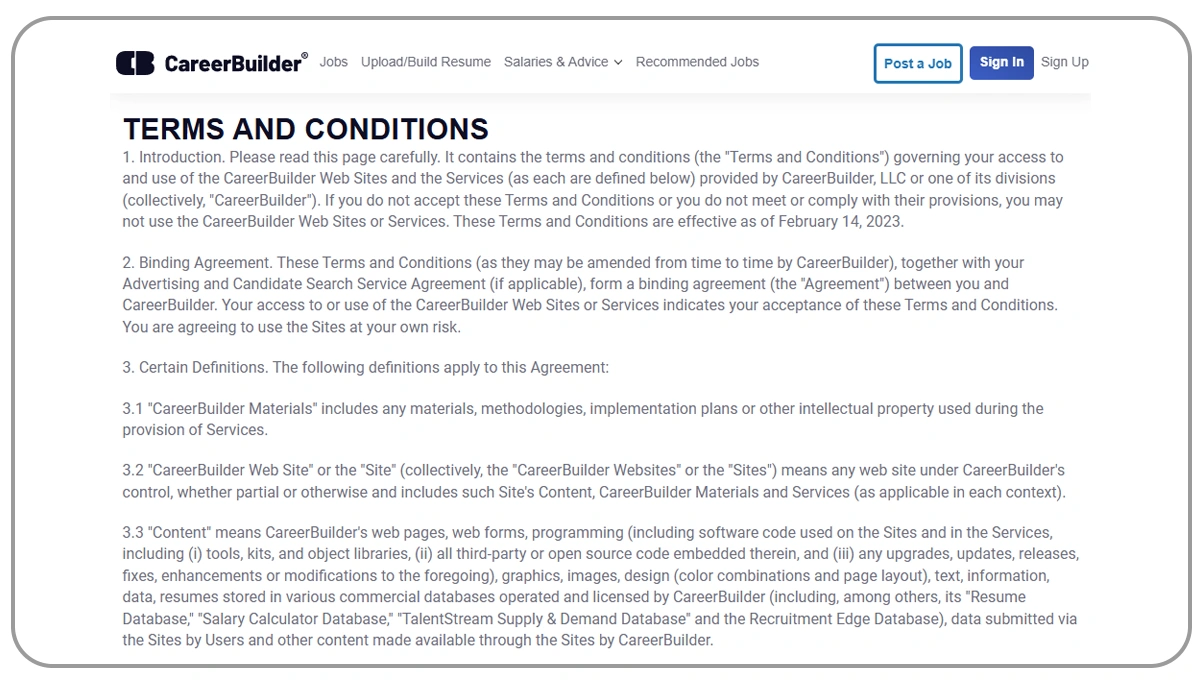 While Scraping CareerBuilder Reviews Data offers great value, you must follow best practices:
While Scraping CareerBuilder Reviews Data offers great value, you must follow best practices:- Respect robots.txt directives
- Avoid personal or sensitive data
- Include crawl delays and request throttling
- Refrain from scraping at disruptive frequencies
- Use proxies/IP rotation to avoid blocking
Also, check CareerBuilder’s Terms of Use to ensure compliance.
Building Your CareerBuilder Reviews Scraper Pipeline
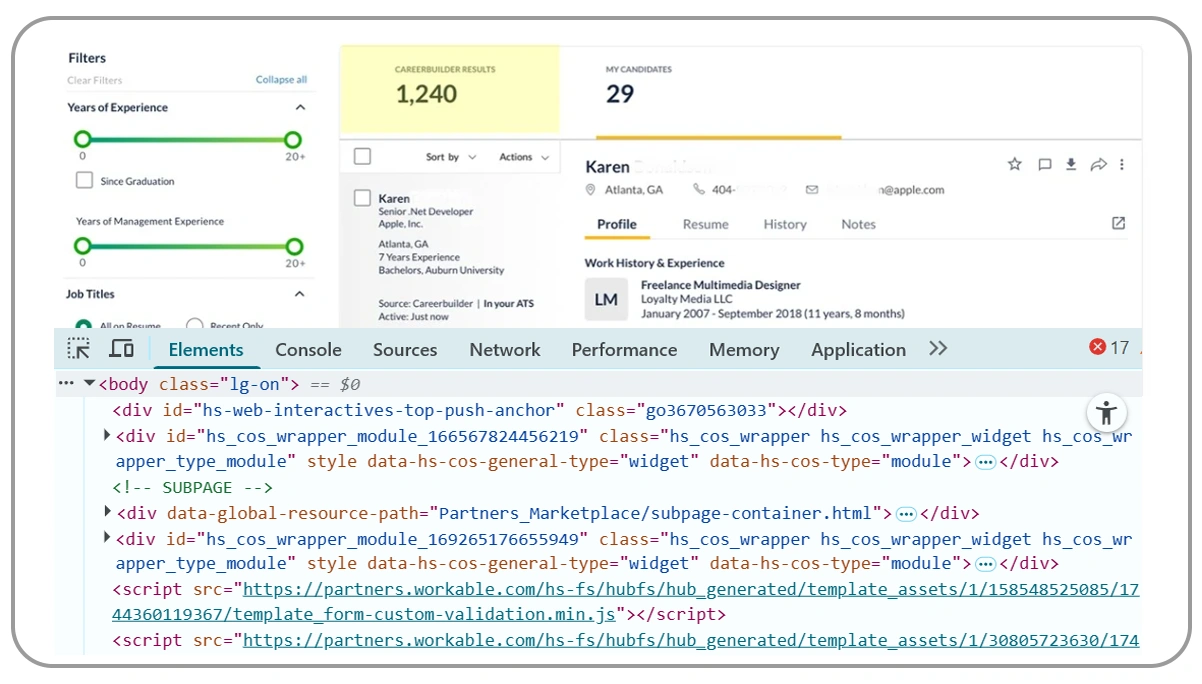 Here’s a production-grade pipeline for CareerBuilder Reviews Data Scraping:
Here’s a production-grade pipeline for CareerBuilder Reviews Data Scraping:1. URL Discovery
Identify companies or categories you want to scrape. Use sitemaps or search patterns.
2. Page Crawling
Scrape multiple pages of reviews using pagination logic.
3. Data Extraction
Pull fields like rating, content, date, title, pros, and cons using HTML selectors.
4. Storage
Use databases or export to JSON/CSV for quick access.
5. Analysis Layer
Add a sentiment analyzer, keyword extractor, and visual dashboards.
6. Scheduling
Automate scraping at regular intervals using cron jobs or Airflow.
How to Analyze Scraped CareerBuilder Review Data?
 Once you’ve scraped data, here are some advanced analytical strategies:
Once you’ve scraped data, here are some advanced analytical strategies:1. Sentiment Classification
Use models like VADER or BERT to classify sentiment into:
- Positive
- Neutral
- Negative
2. Time-Series Analysis
Track how ratings evolve monthly or quarterly—especially during key events like CEO changes or layoffs.
3. Topic Modeling
Use NLP techniques like LDA to surface common themes (e.g., “work-life balance”, “micromanagement”, “career growth”).
4. Word Clouds
Visualize the most frequently used words across thousands of reviews.
5. Company Comparisons
Benchmark companies across industries by average rating, sentiment, and keyword frequency.
Using Machine Learning on CareerBuilder Review Data
Once you’ve scraped thousands of reviews, you can apply ML to:
- Predict employee churn risk based on review patterns
- Categorize reviews automatically
- Identify toxic management patterns
- Personalize job recommendations based on review preferences
Insightful Metrics You Can Derive
Here’s what you can uncover with a solid CareerBuilder Reviews Scraper:
| Metric | Description |
|---|---|
| Average Company Rating | Track overall satisfaction |
| Sentiment Score % Positive vs. | Negative reviews |
| Top Complaints" | Most frequent "Cons" |
| Top Praises | Most frequent "Pros" |
| Review Volume by Location | Popularity by region |
| CEO Approval Trends | Based on keywords and sentiment |
| Industry Benchmarking | Compare firms within same field |
Sample Dashboards for Review Analysis
 You can visualize the data through dashboards built with tools like:
You can visualize the data through dashboards built with tools like:- Tableau
- Power BI
- Looker
- Plotly Dash
- Streamlit
Example KPIs to showcase:
- Average review score by location
- Negative review spike alerts
- Pie chart of top "Pros" and "Cons"
- Line chart of review sentiment over time
Automating and Scaling the Process
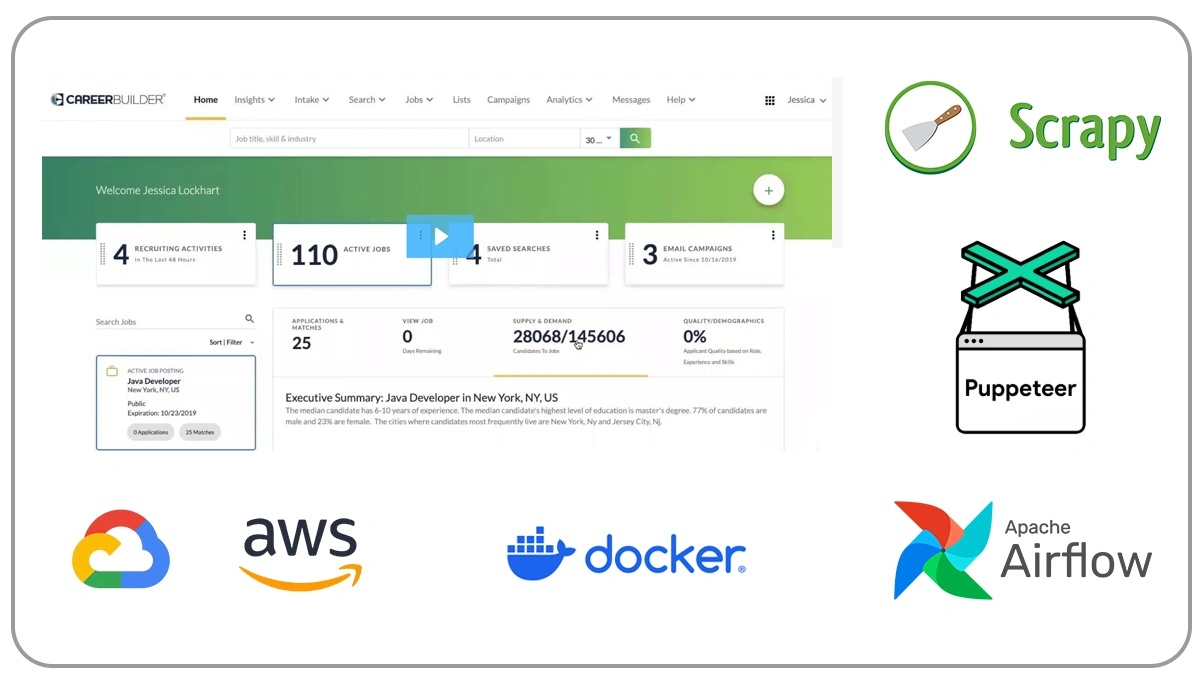 To scale your CareerBuilder Reviews Scraper, use:
To scale your CareerBuilder Reviews Scraper, use:- Scrapy + Splash: For JS-rendered pages
- Rotating Proxies + User Agents: To avoid detection
- Airflow: For scheduling and workflow management
- Docker: For containerizing your scraper
- Cloud (AWS, GCP): For deployment and scalability
Example Findings from Scraping 50,000 Reviews
 If you scraped 50K reviews across 1,000 companies, you might find:
If you scraped 50K reviews across 1,000 companies, you might find:- 68% mention work-life balance as a top concern
- Only 40% express satisfaction with upper management
- Healthcare and tech have highest approval ratings
- Locations in California show lower satisfaction vs. Texas
- Top complaint keywords: “no growth”, “toxic environment”, “low pay”
Why Choose Datazivot?
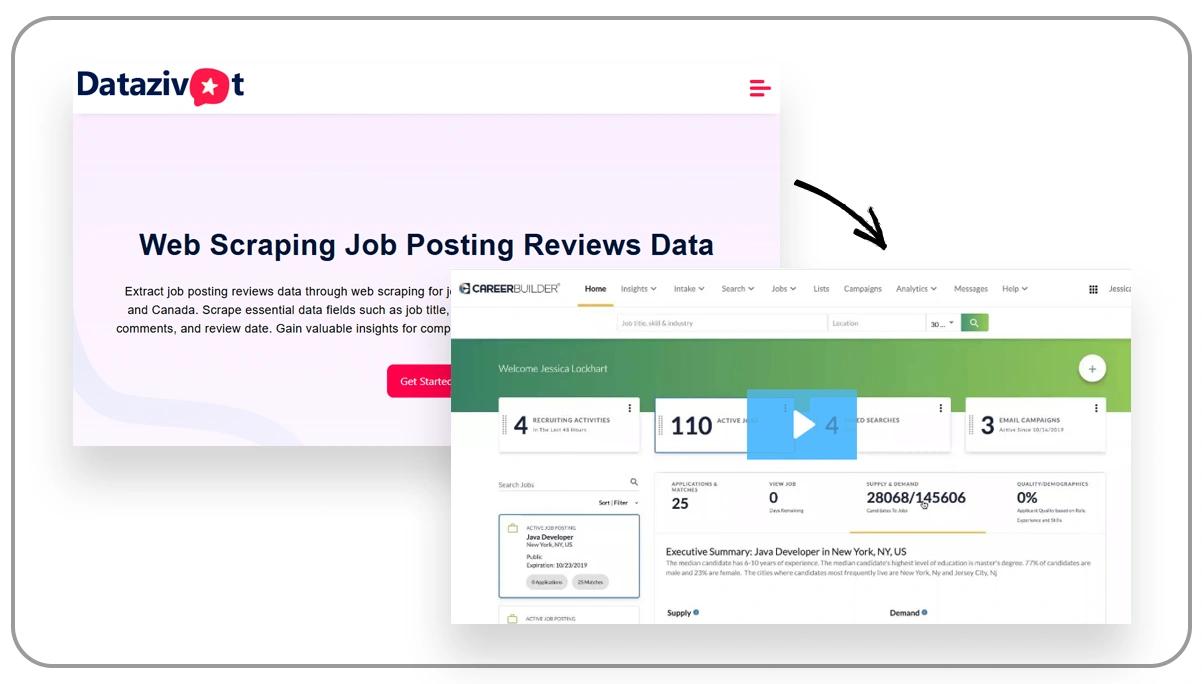 At Datazivot, we deliver precise and reliable Web Scraping Job Posting Reviews Data to help you uncover genuine insights from job seekers and employees. Our expert CareerBuilder reviews data scraping services enable you to scrape CareerBuilder reviews data efficiently for market analysis, HR strategy, and reputation management. With our advanced CareerBuilder reviews data extractor, you get structured and scalable data tailored to your needs. Trust our robust CareerBuilder reviews scraper to capture real-time feedback and sentiment from CareerBuilder users. Choose Datazivot for accurate, secure, and high-performance review data solutions that give your organization a competitive advantage.
At Datazivot, we deliver precise and reliable Web Scraping Job Posting Reviews Data to help you uncover genuine insights from job seekers and employees. Our expert CareerBuilder reviews data scraping services enable you to scrape CareerBuilder reviews data efficiently for market analysis, HR strategy, and reputation management. With our advanced CareerBuilder reviews data extractor, you get structured and scalable data tailored to your needs. Trust our robust CareerBuilder reviews scraper to capture real-time feedback and sentiment from CareerBuilder users. Choose Datazivot for accurate, secure, and high-performance review data solutions that give your organization a competitive advantage.Conclusion
As the HR landscape becomes more data-driven, Web Scraping CareerBuilder Reviews Data is no longer optional—it’s essential. With the right tools and compliance measures, you can unlock invaluable insights hidden in thousands of employee and candidate reviews.
From improving workplace culture to optimizing recruitment strategies, CareerBuilder Reviews Data Scraping enables better decisions across industries. If you're ready to Scrape CareerBuilder Reviews Data, build a CareerBuilder Reviews Data Extractor, or deploy a CareerBuilder Reviews Scraper, now’s the time to act. Ready to harness the power of reviews?
Partner with Datazivot today and turn CareerBuilder feedback into actionable insights!
Originally published by https://www.datazivot.com/careerbuilder-reviews-data-scraping-insights.php